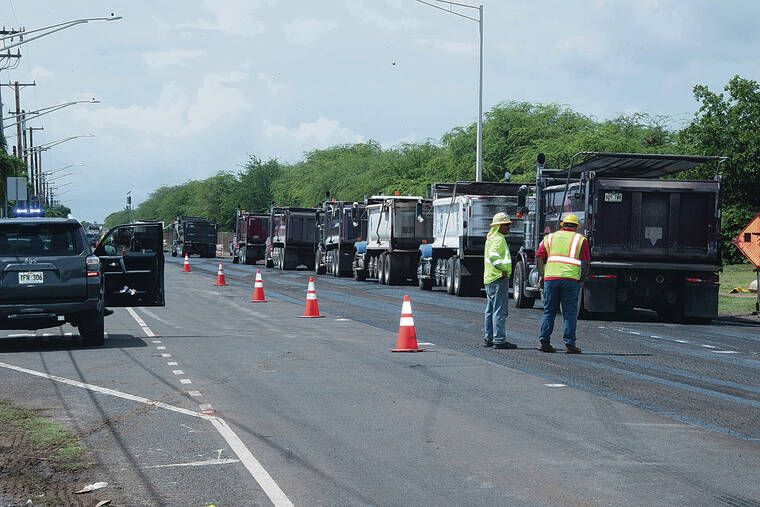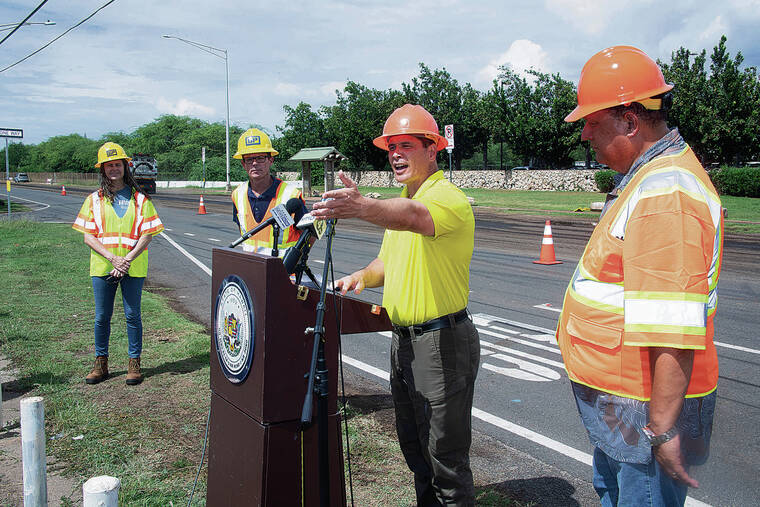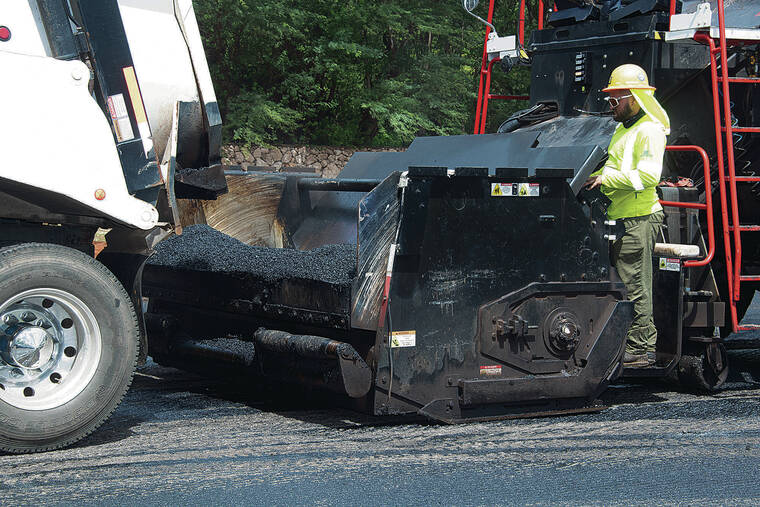The Hawaii Department of Transportation began paving a road in Ewa Beach with a mix of plastic and asphalt Tuesday in a test that, if successful, could lead to more sustainable roadways and less trash in the islands.
The testing, underway along Fort Weaver Road between Kilaha Street and Puuloa Beach Park, will help determine the viability of paving Hawaii’s roads with a mix of asphalt and recycled plastics. The initial test will use 1,950 tons of plastic-asphalt mix and “will keep the equivalent of 195,000 plastic bottles out of the landfill,” a DOT news release said Tuesday.
The paving of Fort Weaver Road is expected to finish in late July, the news release said.
But it’s not helping reduce trash in Hawaii just yet, since the plastic for the test was imported from the mainland. The DOT hopes that if the new road holds up and shows no signs of escaping microplastics or chemical additives, future roads will be built with plastic supplied from Hawaii’s consumers and the ocean.
“We want to make sure we get this technology to be usable by anybody else moving forward with infrastructure of this kind,” said DOT Deputy Director for Highways Ed Sniffen at a news conference Tuesday in front of the paving work.
UH Manoa and Hawaii Pacific University researchers will evaluate road performance and environmental effects for a year and a half, the news release said.
“Any time we can divert waste from the waste streams and put it into roads, we’re excited about it,” said Jerrod Schreck, the president of Grace Pacific LLC, which is contracted for the project.
“First impression is: good stuff,” Schreck said. “Looks like asphalt, smells like asphalt, compacts like asphalt, works like asphalt, and the test here is going to tell us whether it performs like asphalt over time.”
Ricardo Archilla, a professor of civil and environmental engineering at UH Manoa, said his team will be testing the road for deformation and fatigue cracking “to make sure that the products perform as well as the existing mixes or even better.” His team will also be collecting water runoff from the test road to send to HPU researchers to analyze for microplastics.
Jennifer Lynch, the co-director of the Center for Marine Debris Research at HPU, called the test “an excellent opportunity for us to address this microplastic or pollution leaching here in the Hawaiian environment.”
“If the results rule out
environmental pollution concerns, then the state of Hawaii can scale up,” Lynch said. “Plastic from marine debris taken out of our ocean could be recycled into our roads here. Or local post-consumer waste could also be recycled into the roads to increase and enhance the performance of the roads while also doing a win-win for the ecology and the economy here in Hawaii,” she said.
The DOT decided to run the test in Ewa Beach with the support of the district’s state senator, Kurt Fevella. “I was 110% for it because we know what plastic does to our ocean and what plastic does to our environment,” Fevella said. “If this works out for us, we’re gonna have our own plant, we’re gonna be able to process our own here. It’s not only going to be good for the planet, but for the people who have jobs.”
The DOT is also testing a pavement mix of 50% recycled asphalt, taken from older roads in Hawaii, to reduce resources in future road construction.
The plastic being used in the road is postindustrial waste that was shredded and turned into small black pellets, then shipped to Hawaii. “The whole intent is to ensure that we test this out, make sure it works, then start using our own plastics here, own trash here to produce this material,” Sniffen said.








